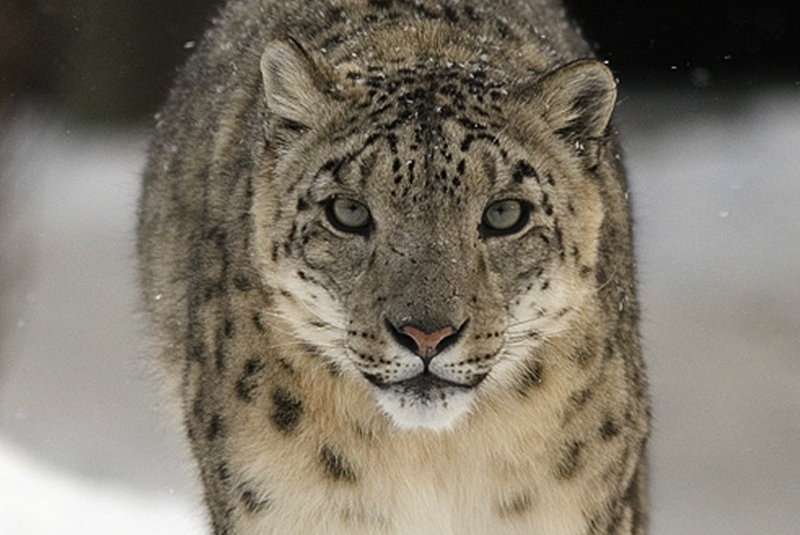Snow leopards (Panthera Uncia) face a dire threat due to poaching and the illegal trade of their skins and body parts. A recent report by the non-profit TRAFFIC suggests that one snow leopard is killed daily across its entire range.
Furthermore, humans confront the snow leopards when they feed on domestic cattle leading to a conflict. The lack of natural prey due to livestock overgrazing, poaching, and livestock defence also causes the snow leopard population to decline.
Consequently, the snow leopard is one of the most endangered animal species in the world. In the last twenty-five years, the snow leopard population has decreased by over twenty per cent.
In 2019, the Union Ministry of Environment, Forest and Climate Change started the Snow Leopard Population Assessment in India (SPAI) to assess the species’ population in the Indian Himalayas. The SPAI project – the first-ever coordinated attempt to assess the number of snow leopards throughout India – is part of a broader effort to document the snow leopard population around the globe.
The project is managed by the Global Snow Leopard and Ecosystem Protection Program, of which India is a member.
India covers a large part of the worldwide distribution area of snow leopards. For the same reason, the country has a significant role in protecting the world’s wild snow leopard populations.
Koustubh Sharma, a snow leopard specialist and coordinator for the worldwide network Global Snow Leopard and Ecosystem Protection Program, explains how SPAI might track the effects of climate change on snow leopard habitats and why conserving snow leopards is essential.
Snow leopard conservation helps protect the alpine ecosystem, including goats and sheep, grazing areas, and local livelihoods. The snow leopard, Sharma argues, is a barometer for the health of India’s mountains, which provide water to more than half of the country’s population. Since it is hard to spot snow leopards, they are known as mountain ghosts.
Recent research suggests that climate change –which increases the frequency and severity of extreme events such as dzuds (severe winters), flash floods, cloud bursts, landslides and extreme temperatures – will significantly impact snow leopards and their habitats. All the current risks to snow leopards are expected to be amplified by how people react to changes in climatic patterns.
However, it is not all doom and gloom. Recently, the Snow leopard population – primarily found in Ladakh, Jammu and Kashmir, Sikkim, Uttarakhand, and Arunachal Pradesh – increased.
Mainly, Himachal Pradesh had reason to celebrate. In 2021, the population of snow leopards increased in the state. As the Snow leopard was designated as the state’s wildlife mammal, local communities became the most potent conservation partners.
Snow leopards sometimes attack village cattle, especially when they can’t locate wild prey. Earlier, that was the main reason for the locals to kill snow leopards. But now, the locals have realised that if snow leopards become extinct, the population of blue sheep and ibex (snow leopard prey) would skyrocket, presenting a danger to their agriculture.
It is critical to preserve leopards to maintain a healthy environment.
Moreover, in the past few years, villagers started insuring their livestock. In case anyone loses livestock to snow leopards, they could claim their damages. “The only way to ensure successful conservation is by taking people along,” said Sharma, adding, “they can be the most effective champions of conservation.”
Snow leopards are mentioned in mythology all across the world. Many myths include powerful messages that have aided animal conservation for millennia. Recent research suggests that regardless of one’s religious views, including regionally relevant religious concepts in conservation may be beneficial if the message is suitable.
A better understanding of conserving wildlife, especially by the local communities, has paid excellent dividends. Better data about snow leopard distribution and population can be used to implement conservation strategies against poaching, illegal wildlife trade and conflict on the ground.
With the current results of the survey, the future of snow leopards shows a glimmer of hope. With the efforts from organisations and local communities, India might have taken a step forward in saving the mammal from extinction.
-30-
Copyright©Madras Courier, All Rights Reserved. You may share using our article tools. Please don't cut articles from madrascourier.com and redistribute by email, post to the web, mobile phone or social media.Please send in your feed back and comments to editor@madrascourier.com











